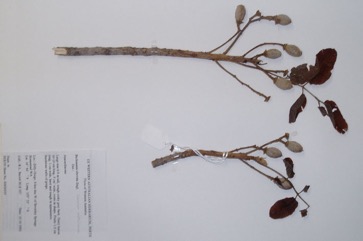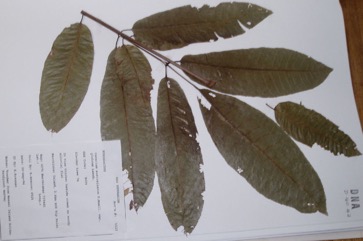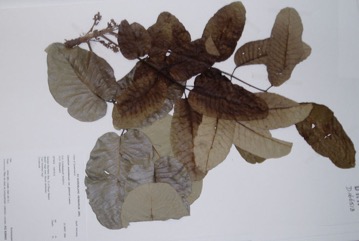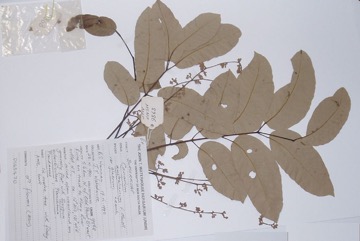Melville Island White Beech

A tropical plant. It grows on light to medium, well drained soils. It prefers an open sunny position. It is drought and frost tender. It is most common in open forest and near the sea on sand dunes.
Also known as:
Marirrma, Styptic Tree
Edible Portion
- Seeds kernel, Nuts
Where does Melville Island White Beech grow?
Found in: Australia, Pacific, Papua New Guinea, PNG
Notes: There are 80-95 Canarium species.
Status: The seeds are eaten especially by children.
Growing Melville Island White Beech
Cultivation: Plants are grown from seed. Seeds do not all germinate at the same time. This can be improved by filing to break the hard seed coat. Trees can be propagated by aerial layering. Grafting may also be possible.
Edible Uses: The seeds are eaten. The ripe fruit is eaten after cooking (roasting). The seeds are eaten especially by children.
Production: Young trees grow rapidly. In Australia trees flower September to December and fruit April to October. Flowering and fruiting time varies with location.
Nutrition Info
per 100g edible portion| Edible Part | Energy (kcal) | Protein (g) | Iron (mg) | Vitamin A (ug) | Vitamin c (mg) | Zinc (mg) | % Water |
|---|---|---|---|---|---|---|---|
| Nuts | - | - | - | - | - | - |
Melville Island White Beech Photos




References
Barwick, M., 2004, Tropical and Subtropical Trees. A Worldwide Encyclopedic Guide. Thames and Hudson p 89
Bodkin, F., 1991, Encyclopedia Botanica. Cornstalk publishing, p 210
Brock, J., 1993, Native Plants of Northern Australia, Reed. p 112
Cherikoff V. & Isaacs, J., The Bush Food Handbook. How to gather, grow, process and cook Australian Wild Foods. Ti Tree Press, Australia p 198
Elliot, W.R., & Jones, D.L., 1982, Encyclopedia of Australian Plants suitable for cultivation. Vol 2. Lothian. p 456
Hearne, D.A., & Rance, S.J., 1975, Trees for Darwin and Northern Australia. AGPS, Canberra p 37
Jackes, B.R., 2001, Plants of the Tropics. Rainforest to Heath. An Identification Guide. James Cook University. p 45
Jones D, L, 1986, Ornamental Rainforest Plants in Australia, Reed Books, p 203
Kenneally, K.E., Edinger, D. C., and Willing T., 1996, Broome and Beyond, Plants and People of the Dampier Peninsula, Kimberley, Western Australia. Department of Conservation and Land Management. p 74
Lazarides, M. & Hince, B., 1993, Handbook of Economic Plants of Australia, CSIRO. p 46
Levitt, D., 1981, Plants and people. Aboriginal uses of plants on Groote Eylandt, Australian Institute of Aboriginal Studies, Canberra. p 85
Paczkowska, G. & Chapman, A.R., 2000, The Western Australian Flora. A Descriptive Catalogue. Western Australian Herbarium. p 189
Smith, N and Wightman, G.M., 1990, Ethnobotanical Notes from Belyuen Northern Territory Australia. Northern Territory Botanical Bulletin No 10. Parks and Wildlife Commission of the Northern Territory. p 7, 8
Townsend, K., 1999, Field Guide to Plants of the Dry Tropics. Society for Growing Australian Plants, Townsville Branch Inc. p 28
Vigilante, T., et al, 2013, Island country: Aboriginal connections, values and knowledge of the Western Kimberley islands in the context of an island biological survey. Records of the Western Australian Museum Supplement 81: 145-182
Wheeler, J.R.(ed.), 1992, Flora of the Kimberley Region. CALM, Western Australian Herbarium, p 655
Wightman, G. & Brown, J., 1994, Jawoyn Plant Identikit, Common Useful Plants in the Katherine Area of Northern Australia. Concervation Commission Northern Territory. p 18
Wightman, G. M. & Andrews, M.R., 1989, Plants of Northern Territory Monsoon Vine Forests (Vol 1). Conservation Commission of Northern Territory. p 28